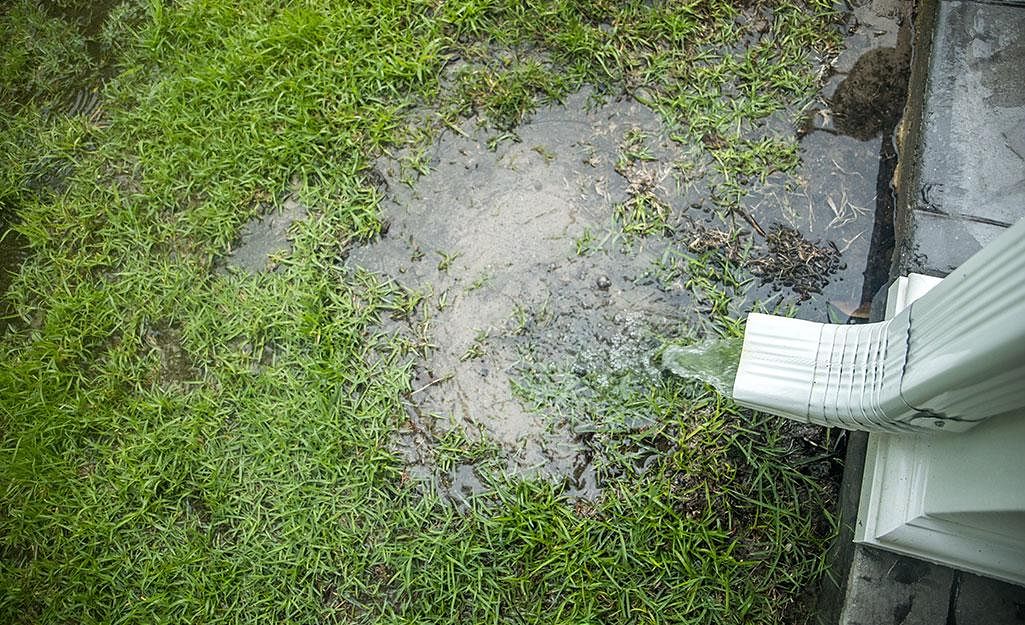Poor drainage can lead to water damage, foundation issues, and even health hazards due to mold and mildew growth. Identifying and fixing drainage problems promptly can save you time, money, and stress. Here's a guide on how to spot drainage issues and address them effectively.
Signs of Drainage Problems
Standing Water
- Description: Pools of water that remain for hours or days after rainfall.
- Potential Cause: Poor soil absorption, low spots in your yard, or obstructed drainage paths.
Water Stains in the Basement
- Description: Discoloration or watermarks on basement walls or floors.
- Potential Cause: Water seeping through foundation cracks or improper grading around the house.
Mold and Mildew
- Description: Musty odors, black spots, or white powdery substances on walls and floors.
- Potential Cause: Excess moisture from poor drainage leading to high humidity levels.
Foundation Cracks
- Description: Visible cracks in the foundation walls or floor.
- Potential Cause: Water pressure from saturated soil pushing against the foundation.
Erosion
- Description: Noticeable soil loss in your yard, exposing roots or causing landscape features to shift.
- Potential Cause: Water runoff not properly directed away from your property.
Gutter Issues
- Description: Overflowing gutters or water cascading down the sides of your home.
- Potential Cause: Clogged or improperly installed gutters and downspouts.
Quick Fixes for Common Drainage Problems
Clearing Gutters and Downspouts
- Action: Regularly clean out leaves, twigs, and debris from gutters and downspouts.
- Tools Needed: Ladder, gloves, garden trowel, hose.
- Tip: Install gutter guards to minimize debris accumulation.
Extending Downspouts
- Action: Attach downspout extenders or splash blocks to direct water away from your foundation.
- Tools Needed: Downspout extension kit, screwdriver.
- Tip: Ensure extensions direct water at least 5-10 feet away from the house.
Regrading Your Yard
- Action: Add soil to low spots and ensure a gentle slope away from your home.
- Tools Needed: Shovel, rake, topsoil.
- Tip: A slope of 1 inch per foot for the first 6-10 feet is usually sufficient.
Installing a French Drain
- Action: Dig a trench, line it with landscape fabric, add gravel, and lay perforated pipe before covering with more gravel and soil.
- Tools Needed: Shovel, landscape fabric, gravel, perforated pipe.
- Tip: Ensure the pipe slopes slightly downhill to facilitate water flow.
Creating a Rain Garden
- Action: Plant a rain garden with deep-rooted native plants in areas where water tends to pool.
- Tools Needed: Shovel, compost, mulch, native plants.
- Tip: Position the garden at least 10 feet away from your home to avoid foundation issues.
Fixing Foundation Cracks
- Action: Seal small cracks with epoxy or polyurethane foam injection kits.
- Tools Needed: Crack injection kit, safety goggles, gloves.
- Tip: For large or multiple cracks, consult a professional.
Long-Term Solutions
Sump Pump Installation
- Action: Install a sump pump in your basement to remove accumulated water.
- Tools Needed: Sump pump kit, drill, PVC piping.
- Tip: Regularly test the pump to ensure it’s functioning correctly.
 Professional Drainage System Installation
Professional Drainage System Installation
- Action: Hire professionals to design and install a comprehensive drainage system tailored to your property.
- Tools Needed: Professional services.
- Tip: Consider systems like surface drains, subsurface drains, and grading improvements.
Preventative Measures
- Regular Maintenance: Inspect your drainage system, gutters, and downspouts regularly.
- Landscaping: Use native plants and mulch to improve soil absorption and reduce erosion.
- Hardscaping: Incorporate permeable materials for driveways and patios to allow water infiltration.
Conclusion
Identifying and fixing drainage problems is essential for protecting your property and ensuring a safe and healthy living environment. By recognizing the signs of poor drainage and implementing quick fixes and long-term solutions, you can prevent costly damage and maintain the integrity of your home. Regular maintenance and proactive measures will help you stay ahead of potential issues, ensuring your drainage system functions effectively year-round.
